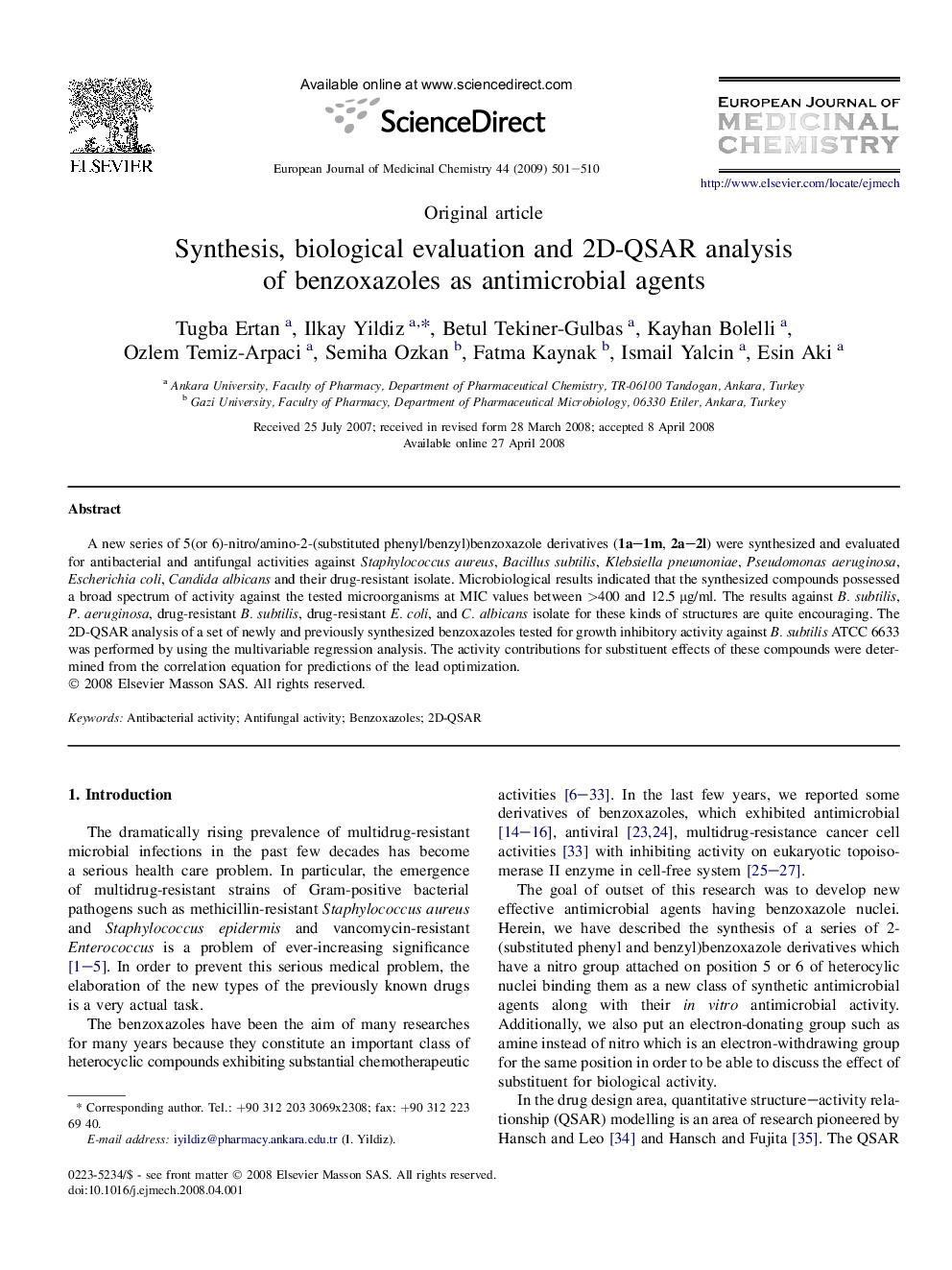| Article ID | Journal | Published Year | Pages | File Type |
|---|---|---|---|---|
| 1395297 | European Journal of Medicinal Chemistry | 2009 | 10 Pages |
A new series of 5(or 6)-nitro/amino-2-(substituted phenyl/benzyl)benzoxazole derivatives (1a–1m, 2a–2l) were synthesized and evaluated for antibacterial and antifungal activities against Staphylococcus aureus, Bacillus subtilis, Klebsiella pneumoniae, Pseudomonas aeruginosa, Escherichia coli, Candida albicans and their drug-resistant isolate. Microbiological results indicated that the synthesized compounds possessed a broad spectrum of activity against the tested microorganisms at MIC values between >400 and 12.5 μg/ml. The results against B. subtilis, P. aeruginosa, drug-resistant B. subtilis, drug-resistant E. coli, and C. albicans isolate for these kinds of structures are quite encouraging. The 2D-QSAR analysis of a set of newly and previously synthesized benzoxazoles tested for growth inhibitory activity against B. subtilis ATCC 6633 was performed by using the multivariable regression analysis. The activity contributions for substituent effects of these compounds were determined from the correlation equation for predictions of the lead optimization.
Graphical abstract A new series of 5(or 6)-nitro/amino-2-(substituted phenyl/benzyl)benzoxazole derivatives (1a–1m, 2a–2l) were synthesized and evaluated for antibacterial and antifungal activities against Staphylococcus aureus, Bacillus subtilis, Klebsiella pneumoniae, Pseudomonas aeruginosa, Escherichia coli, Candida albicans and their drug-resistant isolate. Microbiological results indicated that the synthesized compounds possessed a broad spectrum of activity against the tested microorganisms at MIC values between >400 and 12.5 μg/ml. The results against B. subtilis, P. aeruginosa, drug-resistant B. subtilis, drug-resistant E. coli, and C. albicans isolate for these kinds of structures are quite encouraging. The 2D-QSAR analysis of a set of newly and previously synthesized benzoxazoles tested for growth inhibitory activity against B. subtilis ATCC 6633 was performed by using the multivariable regression analysis. The activity contributions for substituent effects of these compounds were determined from the correlation equation for predictions of the lead optimization.Figure optionsDownload full-size imageDownload as PowerPoint slide
